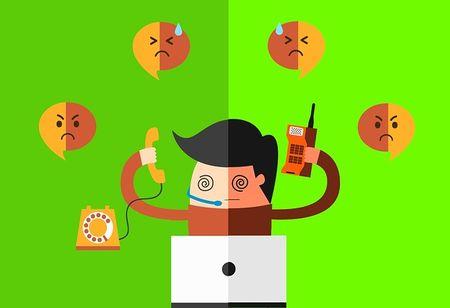
The Good, the Bad & the Ugly of Customer Service


CEO Insights team
The Key findings of the study includes that, 71 percent of business leaders think they provide better customer service than their competitors – a number that is mathematically impossible to achieve. Four times the number of business leaders (40 percent) as customers (10 percent) rate the current standard of customer service provided as ‘excellent’, while only 23 percent of customer-facing staff rate their organization’s services in the same way. An overwhelming 89 percent of decision makers feel that their organization provides an overall positive level of customer service, compared to 73 percent of employees. Only 54 percent of customers feel the same way.
While 81 percent of business decision makers consider customer service as either their main or key competitive differentiator, 33 percent of customer-facing employees say they face no consequences for providing bad customer service. Meanwhile, 48 percent of customer-facing employees say they experience barriers to providing good service.
88 percent of customer-facing employees say that customer service is a priority within their business, but the customers themselves are telling a different story. Only 11 percent of consumers say that they find contacting customer services to be an enjoyable experience. Of those who expressed dissatisfaction, 63 percent say that they would rather clean the toilet than have to contact a customer service team. Only 10 percent say that their typical customer service experience is ‘excellent’.
Despite the fact that 87 percent of business decision
Good customer service can be the difference between success and failure, and what this study tells us is that organizations still have a long way to go before they are able to meet the expectations of their customers
makers believe they know their customers well, the vast majority of consumers feel differently. Just 23 percent of consumers say businesses understand them as a person and their customer service preferences ‘extremely well’, while 63 percent say that organizations should make getting to know them better their top priority.
77 percent of customers agree that the standard of customer service they receive is a major determining factor in their loyalty, with 89 percent saying that receiving poor customer service from a business damages their impression of the brand. Significantly, 75 percent also say they have previously stopped doing business with an organization because of poor customer service, with 44 percent reporting that if they receive a negative customer service experience, they immediately stop the purchase and move to another vendor. Despite this, only 35 percent of business decision-makers say they lose customers ‘all the time’ or ‘fairly regularly’ as a result of providing poor customer service.
Customers highlighted a number of specific areas of frustration within customer service for businesses to improve on. Their top three frustrations include taking too long to receive service (82 percent), having to repeat themselves when switching between channels or agents (76 percent), and not knowing the status of the query (64 percent). When asked what made for a positive customer service experience, 59 percent agreed that a quick resolution of their issue or question mattered most, followed by a need for knowledgeable service agents (48 percent).
“Good customer service can be the difference between success and failure, and what this study tells us is that organizations still have a long way to go before they are able to meet the expectations of their customers” says Suman Reddy, Managing Director, Pegasystems India. “The good news is that help is at hand, and there are a number of solutions available that can help them understand and proactively address customer issues, while also arming customer-facing staff with the tools they need to provide more contextual, relevant, and knowledgeable service. Customers win, employees win, and positive business outcomes are delivered as a result,” he adds.
“The real question is, how willing are key decision makers within organizations to make the transformation required to turn things around? Bad customer service has long been a thorn in the side of consumers, and it’s now more important than ever that business leaders and employees collaborate closely and start facing up to the potentially ugly facts of the quality of the service they are providing before it’s too late,” concludes Suman.